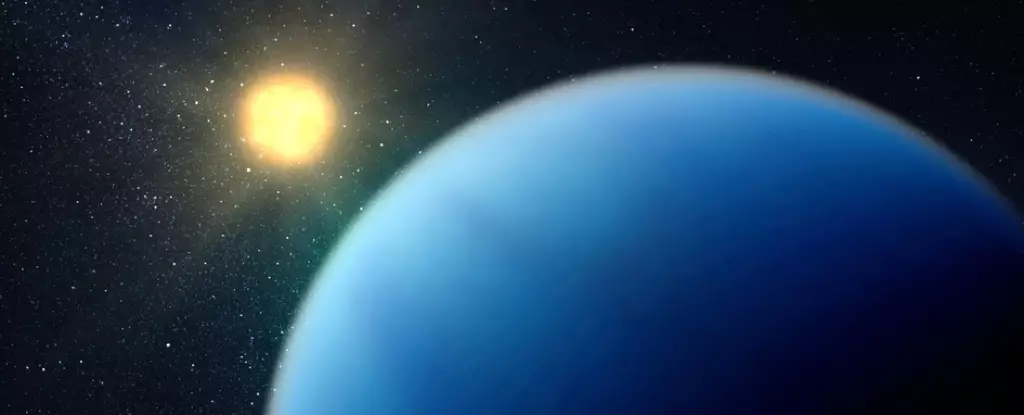NASA scientists have been intrigued by a peculiar phenomenon they have observed among a group of planets – shrinkage. While the universe is teeming with a wide array of planets, ranging from gas giants to rocky exoplanets, there appears to be a conspicuous absence of planets that are 1.5 to 2 times the width of Earth. This enigmatic gap has left researchers perplexed, with some suggesting that radiation might be the underlying cause. With over 5,000 exoplanets discovered by NASA, the lack of planets in this size range has been deemed more than just a mere coincidence.
Jessie Christiansen, a research scientist at Caltech and the science lead for the NASA Exoplanet Archive, states that there is clearly an obstruction preventing planets from reaching or maintaining this particular size range. Christiansen’s latest research posits that sub-Neptunes, which are planets two to four times the diameter of Earth, might experience a shrinking phenomenon due to radiation emitted from their cores. The study, published in The Astronomical Journal, sheds light on this intriguing mystery surrounding missing exoplanets.
One possible explanation put forth by the research team revolves around the idea of “core-powered mass loss.” This theory suggests that a planet’s core emits radiation, which subsequently drives its atmosphere away, causing it to separate from the planet over time. This process could be responsible for the shrinking observed among sub-Neptunes. On the other hand, another hypothesis called photoevaporation posits that a planet’s atmosphere dissipates due to the radiation emitted by its host star. However, photoevaporation is thought to occur within the first 100 million years of a planet’s existence, while core-powered mass loss could happen closer to the planet’s one billionth birthday.
To test these two hypotheses, Christiansen’s team analyzed data collected from NASA’s retired Kepler Space Telescope. By examining star clusters that were over 100 million years old, the researchers sought to determine whether photoevaporation or core-powered mass loss had a more significant impact on atmospheric loss. Given that planets are believed to be roughly the same age as their host stars, the planets within these clusters would have experienced photoevaporation but not yet reached the age for core-powered mass loss. The results showed that most of the planets in these clusters still retained their atmospheres, suggesting that core-powered mass loss might be the primary cause of eventual atmosphere loss.
While the new study provides valuable insights into the potential mechanisms behind the shrinking of exoplanets, the mystery is far from solved. Recent work suggests that both core-powered mass loss and photoevaporation may be ongoing processes affecting different exoplanets. Christiansen acknowledges that her work is far from over, emphasizing that our understanding of exoplanets will continue to evolve and deepen over time. Further research and observations are necessary to unravel the complexities of these celestial phenomena and shed light on the enigmatic nature of shrinking exoplanets.
The shrinking of exoplanets presents a fascinating puzzle for scientists, fueling their curiosity and driving them to uncover the underlying causes. Through rigorous research and data analysis, researchers like Jessie Christiansen are making significant strides toward solving this mystery. By exploring the effects of radiation on exoplanets’ atmospheres, scientists are bringing us closer to understanding the intricate workings of our vast universe. As technology and observation techniques advance, our understanding of exoplanets and their intriguing phenomena will undoubtedly continue to expand, unraveling the enigmas that lie beyond our solar system.


Leave a Reply